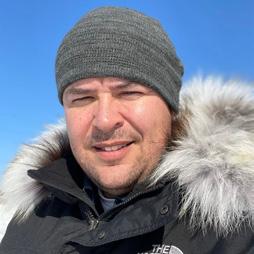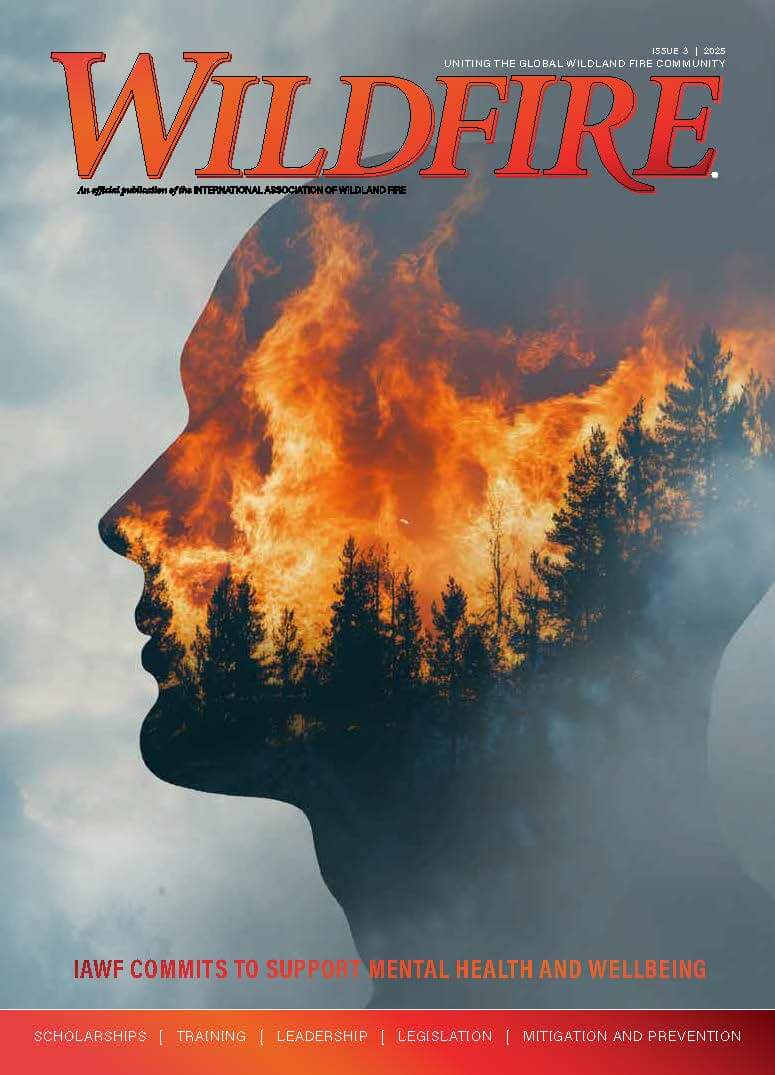CULTURAL BURNING – THE IMPORTANT ROLE OF TRADITIONAL PRACTICES IN THE MODERN ARCTIC
BY EDWARD ALEXANDER
Thirty-two thousand years ago this spring, in the eastern interior of Alaska, during an ice age so severe that the Laurentide Ice Sheet covered most of the continent of North America a mile thick, a Gwich’in man, dressed in neatly tailored, tanned, caribou skin pants and a shirt, walked around the forested edge of a lake, dragging a stick through the tall grass. At the end of the stick flickered a flame that leapt to the grass. The snow in the shadows of the trees blocked the fire’s path, so the flames could travel only into the dead grass that had accumulated, thinning some of the dead willows out in its maw.
The man continued to walk with his torch, through the portage to another lake, and then another, and another. All the while the flames did the work, clearing away the thick grass, making it easier to walk, getting rid of the early coverage for mosquitoes and biting insects where the people would camp through break-up and the summer season in their caribou skin tents.
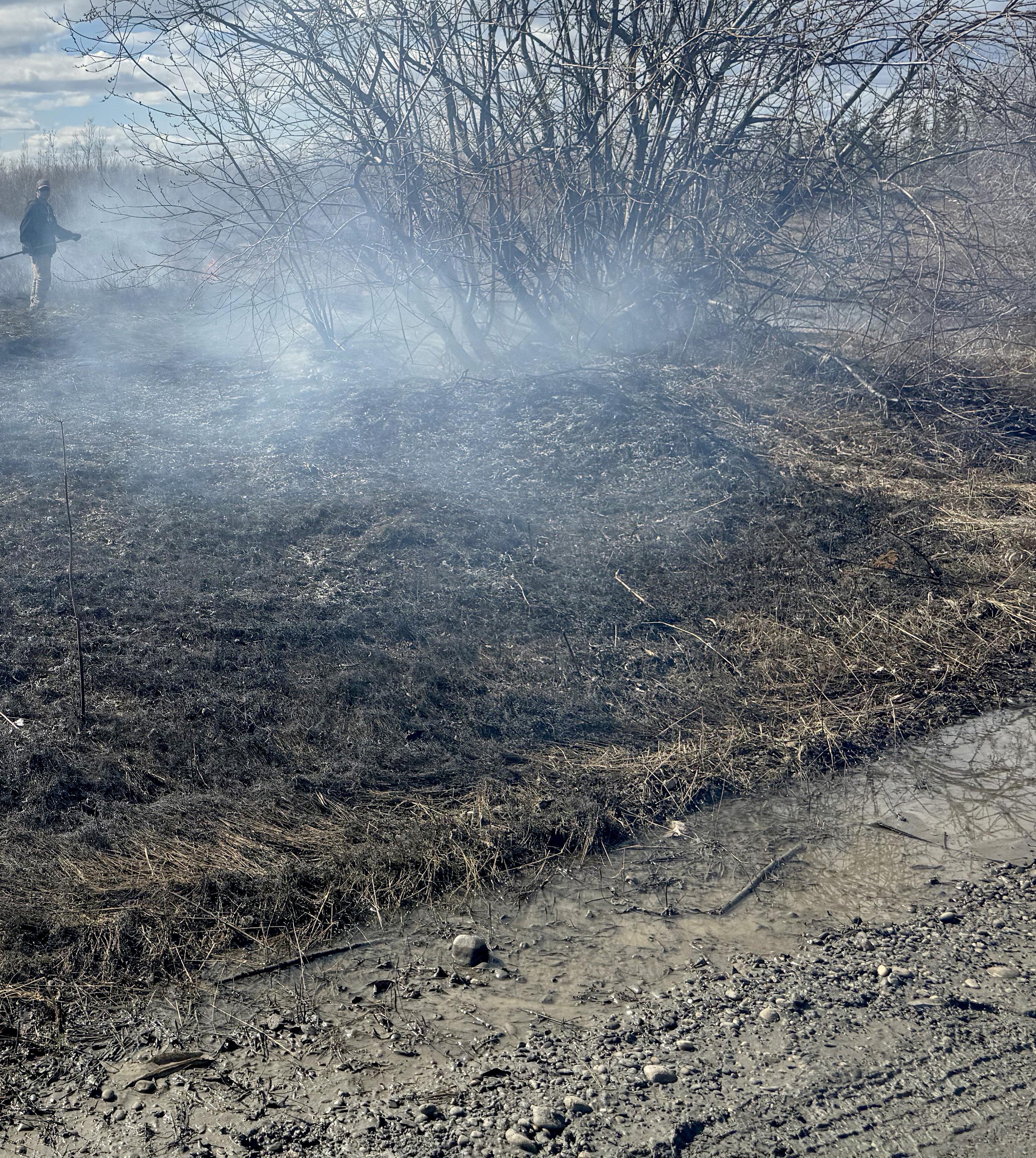
The plants that grew back, he knew, would be a bit different than what had burned: all nature of flowers and thicker, greener, more lush plants. The areas near the berry patches would grow more berries; the bees and the birds would take the place of the gnats and the mosquitoes; and instead of a thick mat of grass that could sustain a fire that could race away, the land was neatly trimmed, down to its very root top – a black mat.
The fire was doing its work. Not perfectly, as there were areas away from camp where the fire had dwindled due to the ground being too wet, or from the wind blowing in a certain direction. The man saw his kids following him, trying to start their little sticks on fire, and one throwing snowballs at the flames.
Migrating birds would soon arrive and would find good food to greet them; the burn would help make browse so nutritious that the birds would all be fat. The people would have good eggs to eat, birds to hunt, and the muskrat would be plentiful. Maybe the moose would have two calves, or three, instead of one. There wouldn’t be a fire to come racing down through the grass, not this summer; it could still come through the timber, the man thought, but the mosaic of lakes and meadows and sloughs that had been burned should be enough to break up any threats the family might face that summer. The man enjoyed the walk, and the way back would be an easier path, one that could help his whole family, his whole tribe.
Today, we call this man’s activity a cultural burn, and, sadly, all too often, the wisdom in that man’s actions has been forgotten, outlawed or not implemented in our landscape that sorely needs the presence of Dinjii Zhuh K’yaa, our traditional Gwich’in ways of life.
Today, we call this man’s activity a cultural burn, and, sadly, all too often, the wisdom in that man’s actions has been forgotten, outlawed or not implemented in our landscape that sorely needs the presence of Dinjii Zhuh K’yaa, our traditional Gwich’in ways of life.
The man didn’t have to cut a fireline with a Pulaski or a chainsaw; he didn’t have to work in a bulldozer cutting a dozer line; and he didn’t have to have air support to keep the fire out of the trees. The snow did the work. The season did the work of keeping the fire cool and controllable, and the fire did its work of clearing the land and creating a green fire break for the summer. The man didn’t have to apply amendments to the soil to make the plants more nutritious, and he didn’t have to apply pesticides to keep biting insects at bay – the ash did all that for him. The man didn’t have to do anything except take a walk while his kids tired themselves out behind him inventing games along the edge of the burn.
The wildland fire community, along with governments, policy makers and citizens, need to take a critical look at the role of cultural fire in the landscapes of northern Alaska, Canada, Russia, and across the circumpolar Arctic. The Pyrocene has met the cryosphere, and the results over the last 20 years have been conclusive: NASA’s MODIS data documents some 174 million hectares of burned area in the circumpolar Arctic Boreal Zone, an area greater than Iceland, Norway, Sweden, Finland, Denmark, and Greenland. While most of these acres have burned in Russia, Canada, and the United States (Alaska), the message written in flame and ash is clear: our environment is changing, and we need to change too.
To protect the Arctic and its people, we need mildfire, not wildfire. We need a healthy environment, not a stagnant monoculture of dead grass. We need solutions that make economic sense. There aren’t enough wildland firefighters in the world to fight fires in the north. How do we tie in a fireline for fires that are larger than U.S. states, or that burn in duff that thickly covers and insulates the soil but readily dries? We must consider the economics of the responses to these fires, and whether mitigation activities are successful at the scale that is needed. To maintain the land and its people, there needs to be a cultural revitalization of Indigenous Knowledge and Indigenous mitigation techniques, not wildland fire suppression born of arbitrary rules, written for the south, and incapable of doing what Indigenous practices have proven they can: stop a fire crisis before it happens, and replace it with a sustainable, fire resilient landscape.
In the modern context, everyone in the wildland fire community has heard of, worked extensively in, or planned for wildland-urban interface (WUI) events. In the sparsely populated north, we do
have traumatic WUI incidents, such as the evacuation of the capital city of Yellowknife in the Northwest Territories in 2023. People fled on the only escape route out, sometimes with fire on both sides of the only highway; the fire advanced 70 kilometers in one day and was a mere 15 kilometers from burning the largest city in the Canadian north to the ground. Usually, in the north, fires are in sparsely populated rural areas larger than any national park and they’re left to burn. These fires fill the air with smoke that threatens the health of people in the north, and, at times,
it pours into cities far from the Arctic Boreal Zone – in one instance making the Statue of Liberty’s torch seem snuffed out in the orange haze that descended on New York; it looked apocalyptic, and the truth is it probably was, in ways we don’t yet understand.
We need new tools in the Arctic to help us better understand wildland fire in the circumpolar context, and what’s occurring with cultural landscapes. Ideally, a Wildland Cultural Interface, and / or an Arctic Wildland Cultural Interface could be developed, so we don’t respond to fires in the Arctic by saving the cabin – the traditional structural protection value at risk – but miss the
reason the cabin is there: for the activity of trapping, and the trapline was allowed to burn over. A trapping cabin can be built in a few days. A trapline, however, is another story; imagine cutting 60 miles of fireline by yourself, and having your income taken out of the equation. We need to reframe cultural resources and values at risk into a matrix of action; we need to understand the cultural structures that need protection – which are different in the Arctic context than elsewhere – and they need to be fully accounted for.
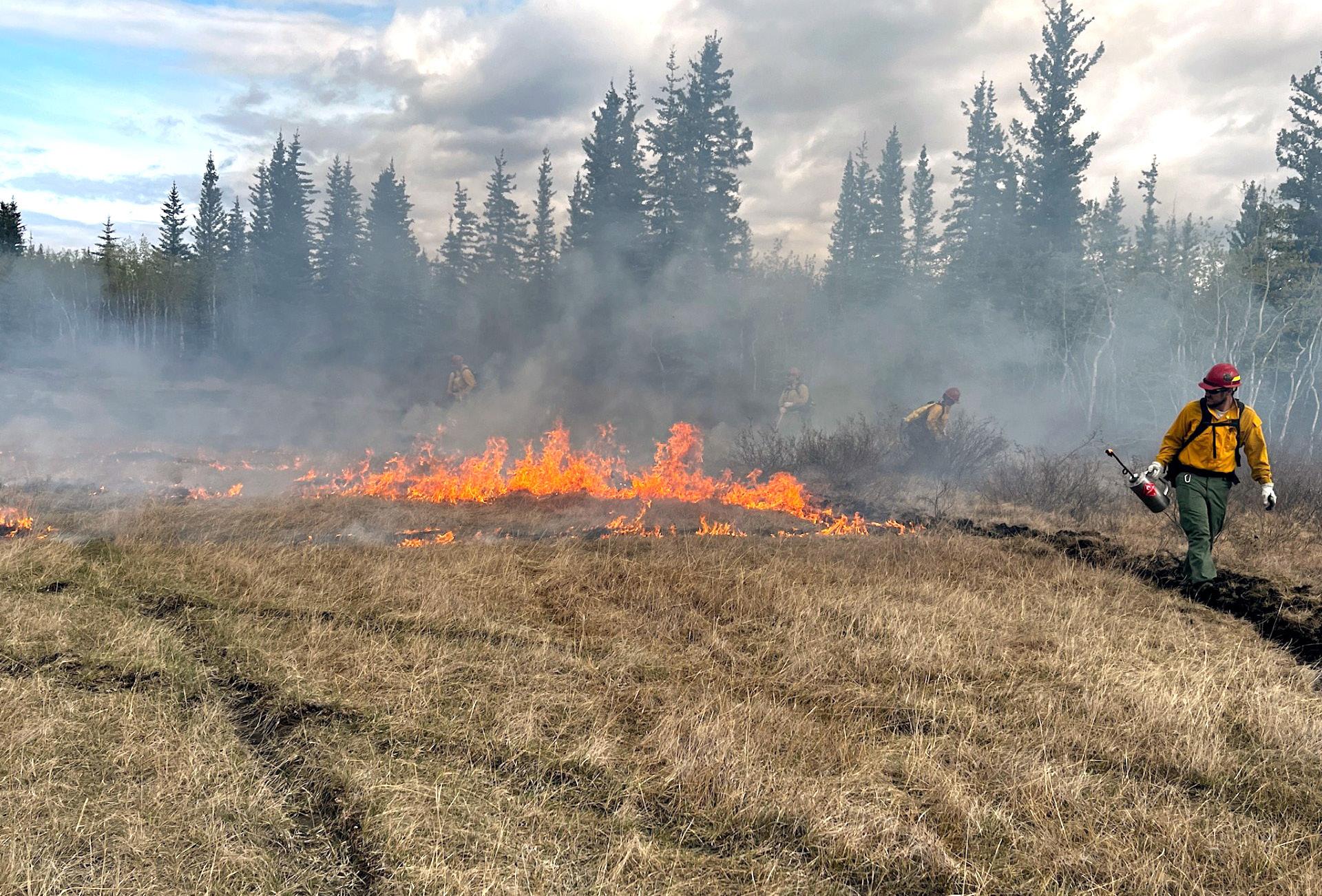
Lichen in stands like these help these populations of caribou be resilient in winter rain events that are becoming more common and block these animals from reaching ground browse covered in ice. Shouldn’t we use a Wildland Cultural Interface to understand and protect myriad critical values like these?
Development of a Wildland Cultural Interface or Arctic Wildland Cultural Interface, coproduced by Indigenous leaders, elders, fire leaders and fire keepers with fire managers, can help us see the true picture of values at risk in the Arctic, and what we need to do to protect.
The Arctic is changing four times as quickly as southern areas; in fact, wildland fires in the Arctic Boreal Zone have become so massive the region has become a major climate change driver. We need to frame our understanding of the gravity of this correctly. We need to understand that a global climate stability is a value at risk by massive wildland fires in the largest forest on planet Earth: the Arctic Boreal Zone. Another value at risk is the collective health of communities that are choking on toxic smoke for months at a time. We need to understand the fact that the largest carbon storage device anywhere on Earth happens to be the living, biological system of the Arctic Boreal Zone, which has sequestered more carbon in its forest soils than humans have ever released from all sources since industrialization, and this system is now aflame. We need to collectively understand that a value at risk is the immense store of carbon in permafrost, which contains more than twice the amount of carbon that humanity has contributed to the atmosphere and is now rapidly collapsing in a thawed state after fire has removed the insulating layers. There is a special kind of ancient permafrost in the north called yedoma, which, due to the new severity of wildland fires in the north, is thawing abruptly from losing its deep layers of protective vegetation, duff, and top soil, releasing not only carbon dioxide but also methane and nitrous oxide, which are far more potent greenhouse gases. Yedoma thaw is an imminent global threat to climate stability, and global carbon budgets, and it too is a value at risk, but today is virtually unaccounted for in how wildland fires are managed anywhere in the Arctic except in Gwich’in homelands. We need new tools for the Arctic.
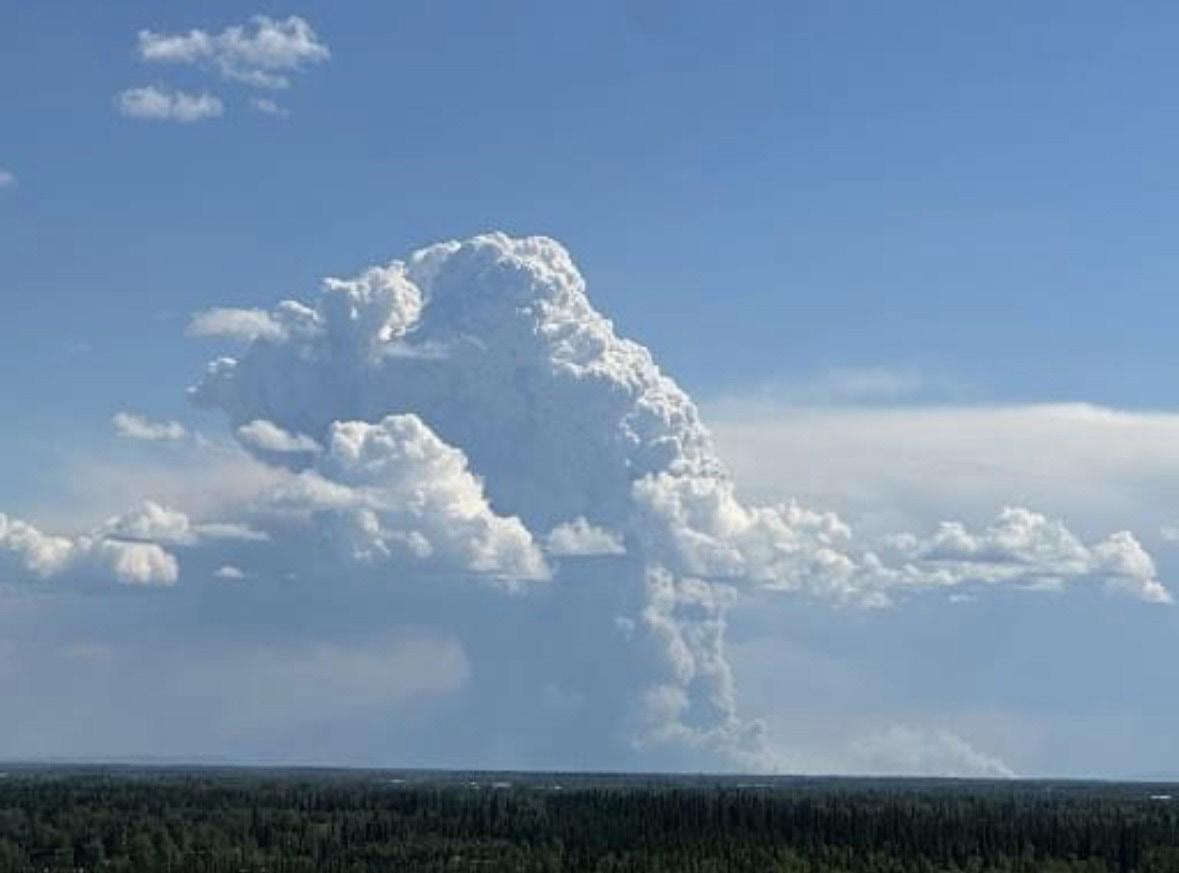
We need a Wildland Climate Interface that can help managers, communities, leaders, firefighters, and policy makers understand how to respond to these issues. An interface can be built to increase our understanding about what we need to do to protect our world, which, when the largest terrestrial carbon storage system is burning and thawing, is a value at risk. Gwich’in have long felt that the answer lies with our ancestors, with that man and his children who passed along cultural burning techniques that are now more important than ever to remember.
